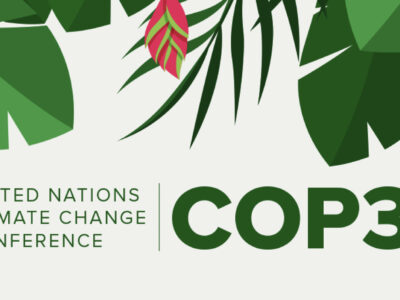Permafrost is ground that remains at or below freezing for two or more consecutive years (for great information on permafrost see the National Snow and Ice Data Center). Climate researchers worry that permafrost will thaw as temperatures rise due to climate change, releasing carbon dioxide and methane into the atmosphere. Two recent studies indicate that this concern is warranted.
This represents one of several processes in the climate system, in which warming leads to increased greenhouse gas concentrations and thus even greater warming. Scientists and engineers call this a positive feedback, in which a process is self-accelerating (also known as a vicious circle).
As with many climate processes, the problem with permafrost relates to a mismatch in time scales. It takes much longer to grow a forest than to cut it down. Likewise, carbon stored over thousands of years in permafrost soils could potentially be released over a much shorter time scale.
In a warmer world, biological activity of permafrost will increase. Plants will spread and as they grow and carry out photosynthesis, they consume carbon dioxide. This warmer ecosystem will also have higher rates of respiration, the process that breaks down organic material to generate energy. One question is whether the increase in photosynthesis will be comparable to or greater than respiration. If it is not, the long-term stores of carbon in the soil could be released to the atmosphere.
Tarnocai and collaborators (Global Biogeochemical Cycles, 2009; see the press release at the Global Carbon Project; and this report) found that the amount of carbon (around 496 Pg or about 0.5 trillion tons) in the top meter (around 3 feet) of permafrost soils of the high northern latitudes is twice as large as previous calculations. As if that wasn’t alarming enough, they estimated that a comparable amount of carbon was stored between 1 and 3 meters.
In regions where carbon has been accumulating over long time periods, they calculate an additional 650 Pg below 3 meters depth. For example, river flow in deltas leads to repeated accumulations, where each deposit buries older ones. Up to 240 Pg C were estimated to occur below 3 meters depth in the seven river deltas of the region. Yedoma is the Siberian name for frozen loess (materials carried by wind or rivers that accumulate and become frozen into the permafrost). It is rich in plant material and even animal bones, such that 2 to 5% of the soil is carbon. Yedoma, which covers over a million square kilometers, was estimated to contain 407Pg of carbon below 3 meters.
Recent model estimates (Canadell et al 2008) found that a 10% thaw of permafrost containing a carbon pool of 1000Pg would lead to an increase in CO2 of 80ppm and an additional warming of 0.7C by end of the 21st century.
Why do we care that there is more carbon than expected in permafrost soil? If permafrost thaws, the carbon that has been locked into the ground can potentially be released into the atmosphere either at once, or slowly, but inevitably, over a long period of time.
Schuur and colleagues measured the exchange of carbon between atmosphere and permafrost in another recent paper (Nature, doi:10.1038/nature08031, and discussed here) , comparing three sites, with minimal, moderate and extensive thaw respectively.
Radiocarbon provides an estimate of the age of the carbon being released, because thermonuclear testing and radioactive decay set the concentration for the atmosphere and recent biological activity. Negative values thus indicate old carbon.
As expected, the exchange of carbon was smallest for the site with minimal thaw. Also as expected, the loss of old carbon was greater in the sites where the permafrost was thawing.
The question then was: would increased uptake of carbon make up for the increase in respiration?
In the site with minimal thaw, where thawing had been occurring for about 15 years, the increase in carbon uptake due to plant growth exceeded the release of carbon due to respiration. However, where thaw had been ongoing for decades, photosynthesis took up less carbon than was respired: over three quarters of the old carbon was lost from the soil.
They conclude that the release of carbon due to permafrost thaw over multi-decadal time scales could be comparable to the current carbon source due to changes in land use (~1.5Pg C/y, around 20% of global emissions).
So far, the measured rate of warming in the northern high latitudes is about twice the global average. That is expected to continue. We don’t know exactly how permafrost will thaw or at what rate, though the depth of the upper active layer which melts seasonally, is deepening in some locations. These recent studies indicate that permafrost may represent an even bigger risk than we thought because the stores of carbon are larger than thought and vegetation will not always compensate for carbon release.





“They conclude that the release of carbon due to permafrost thaw over multi-decadal time scales could be comparable to the current carbon source due to changes in land use”.
Referring primarily, I assume, to the destruction of rainforests in favor of palm oil plantations.
Unilever recently stopped buying palm oil from Indonesia’s Sinar Mas group saying SM’s palm oil is ill-gotten…so to speak.
The P&G’s, Nestle’s and Colgate’s of the world need to follow this lead. The language of the pocketbook is the only talk these slash & burn industrialists understand.
Interesting post, Mary-Elena.
Is it possible to show the calculation and present the specific problems to people, just like what we are doing for data center (eg, http://www.42u.com/efficiency/energy-efficiency-calculator.htm)